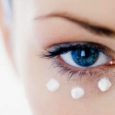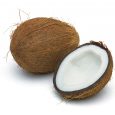Anti Aging Moisturizers – Creams v. Serums
With the demand for anti-aging skin care products at an all time high, manufacturers are constantly evolving their methods of delivering dewy, youthful skin. Anti-aging creams are the standard – a hybrid formula based on the tried and true moisturizers.
The newer product is the serum, an over-the-counter variation on products that were initially used by aestheticians and dermatologists for advanced skin care. Now you can buy either type at prices ranging from department store to discount store levels.
Creams are soothing, rich and designed to provide the extra moisture that aging, sun exposure and environmental toxins steal from the skin over time. No longer the big generic jar on your grandmother’s dresser that went on the whole body from face to toes, today’s anti-aging creams are specially designed for the face and neck.
Creams also come in formulas that are suitable for dry, oily or combination skin types. Choosing a cream for your skin is extremely important. Retinal – the Vitamin A derivative – is found in creams at all price points.
Naturally the more expensive creams have a larger amount of retinal A than the lower-priced products. Aloe Vera, Vitamin E and grape seed oil are also popular additives in anti-aging cream moisturizers. Cream moisturizers for day-wear need to have a high sun protection factor (SPF), while night creams don’t need this feature.
Serums are getting much attention in the anti-aging market for their claims of faster, visible results than creams can deliver. As with anti-aging creams, the key ingredients in most serums are Retinal (Vitamin A) and peptides.
It’s the delivery of peptides that are rapidly absorbed into the skin that gives the notable changes. Peptides act on the collagen levels, which make the skin appear fuller and cause wrinkles to be less apparent.
Continuous use of these serums is absolutely necessary to stimulate collagen production. Erratic use of serums won’t sustain visible results. Top quality serums tend to cost more than creams.
Some serums have a two-step process compared with cream that you simply apply to the face. Another claimed advantage for serums is the inclusion of an ingredient – argireline – which works on the skin much like Botox, but without the toxin.
Argireline is a safe way to relax the muscles, which smoothes out wrinkles. Serums with high concentrations of this element claim up to 25% reduction in fine line and wrinkles after 30 days of continuous use. Argireline is also said to reverse sun damage effects on skin.
The choice of creams versus serums for anti-aging skincare is largely an issue of cost and ease of use. One way to get the best of both worlds at a price savings is to use a serum for several months to achieve the desired wrinkle reduction and then switch to an anti-aging cream.
If that works well to sustain your visible skin improvements, then you have a combination skincare regimen at a lower average cost. You can add back the serums for a month several times a year to boost results.
Or, you can conduct your own comparison. Use a serum for 30 days and take a close-up photo of the results. Then switch to a cream for the next 30 days and take a photo of the skin. Compare these closely to see whether serum or cream is the best anti-aging skincare product for your skin, your budget and your daily cosmetic routine.
Recommended Products For Anti Aging









